3 Weeks, 4 States, 22 Villages and 1 Birthday, Frank Founder Katie Reflects On Her Trip To India
25.01.17
By subscribing to our newsletter, you give us permission to email you with news of our work and events, plus opportunities for volunteering, challenges to take part in and special offers in our shop. You can unsubscribe any time by clicking the link in our email footer.

25.01.17

Great in one way. But on the flip side, it means that I rarely get to see firsthand the amazing work that we do.
This year, the funding agreements we have in place with our partners will come to an end and together, we felt it was crucial that we discuss the next stage of our work face to face.
The fact that I hadn’t been to India since 2013 combined with a need to meet our partners face to face and see our progress, meant that it was me booking a three week trip to India to visit four out of five of our partners. To add a bit of excitement to the trip, I took my eldest daughter, Amelia who just happened to turn 9 on the most gruelling day of the trip.

Over three weeks, I visited no fewer than 20 communities across four different states of India. I met dozens of people and heard more stories than I can possibly tell you. So I’ve narrowed it down to just a few stories with pictures that bring our work to life.
Welcome to Amlidih, a village that sits on a plateau, at the top of a forested mountain in Chhattisgarh.

Frank has been working in this village for 2 years. Back in 2014, this Baiga community had no safe source of drinking water. During the monsoon season, villagers would dig a small pit in the lowest part of the village, desperately trying to capture the water before it ran off down into the valleys.
In the other months they’d walk 1.5km to a temple and take water from there, but water was limited to one bucket each so often they’d send the strongest members of the community on a further 2km, meaning a 7km round trip, to get water from a hand pump in another village.
Water was precious – people would often drink soapy or dirty water because it was so hard to come by and they’d wash once a week as they had to prioritise water for drinking and cooking.
As a consequence, they were often sick with diarrhea and skin conditions.
The women and girls spent so much of their time collecting water, doing household chores and looking after the youngest children that food and income generation was left solely to the men and the girls had no time to go to school.
Parvati was just one of the women I met when I visited. She’s mother to these three girls and a member of the village committee that we helped set up when mapping the village needs.




On the day of our visit, Parvati and her family proudly led us to one of the hand pumps, in the village centre. The pump draws the ground water which is safe to drink. It’s monitored and maintained by members of the community water committee. Parvati was telling us all about it, when I turned around to see her eldest daughter Dhriti showing Amelia how to use the pump – Amelia stepped in to try the pump whilst Dhriti ran to drink the water, conscious not to waste it.


From here we walked to the edge of the village to see the pond, a large and well constructed resource, dug using funds secured from the government, which our field workers supported them in applying for. It has multiple uses, both replenishing ground water – ensuring the hand pumps have a sustainable supply, as well as for washing clothing, kitchen items and as water for livestock. This means that the hand pumps are used for essential drinking water, cooking and hygiene purposes.

Just a short walk away from the pond is a recently harvested rice paddy. The village committee secured funds from the government, as part of their plan to create bunding, a technique that involves levelling fields and building earth walls to hold the rainfall and prevent evaporation or the water just running off down to the valleys. We met two farmers who told us how this has helped them to grow a better, more nutritious variety of rice that is over 100x more productive.

Parvati delighted in telling us about how working together as a community to bring safe water to the village has changed their lives. “Our health is improved” she said “we drink safe water collected within our own village and we can grow and afford better food”
“But also” she went on…”we have more time. We no longer have to walk miles to get water, we can work, growing and harvesting vegetables and fruit and collecting wood.”
Dhriti has started going to school – although school is free, until recently, her family couldn’t afford to buy the uniform and pay for books and transport, they also required her help in collecting and carrying water.
“And another thing” Parvati continued ”Some of the community have already received funds to build a toilet, and others are still waiting, but the desire to have one is high now we understand that open defecation and bad sanitation can affect the water and the health of the village.”
To see Parvati’s house was to see the difference that hygiene training can make. Before she explained that she’d kept drinking water outside in an open container on the floor and scooped it out with whatever she had in her hand, be that a bowl, or in most cases her bare hands. Now she keeps the water in a covered pot, on a high bench and she uses a ladle to draw water to use. She showed us a separate pot outside the house next to a bar of soap, where she and the children would wash their hands before eating.

Known for their shyness, Parvati and her Baiga neighbours were incredibly open and keen to tell their stories. As they’ve got to know and trust the field staff over the last few years, they’ve built a close and respectful relationship which was clear to see.

Next stop, Chittamidi, in the Eastern Ghats, a spine of mountains that run down the east coast of India.
The communities we work with here are also tribal people, from the Gadaba Tribe whose ancestors were originally displaced from Orissa, a few generations ago. They live in the mountains and survive through a predominantly subsistence lifestyle, in part due to the lack of available water.
There is no road to Chittamidi, so we walked a few kilometres over rough ground, crossing a river to get there. Whilst it’s a useful place to do their washing, it rises quickly to a roaring torrent during monsoon season and the village is completely cut off for numerous months.
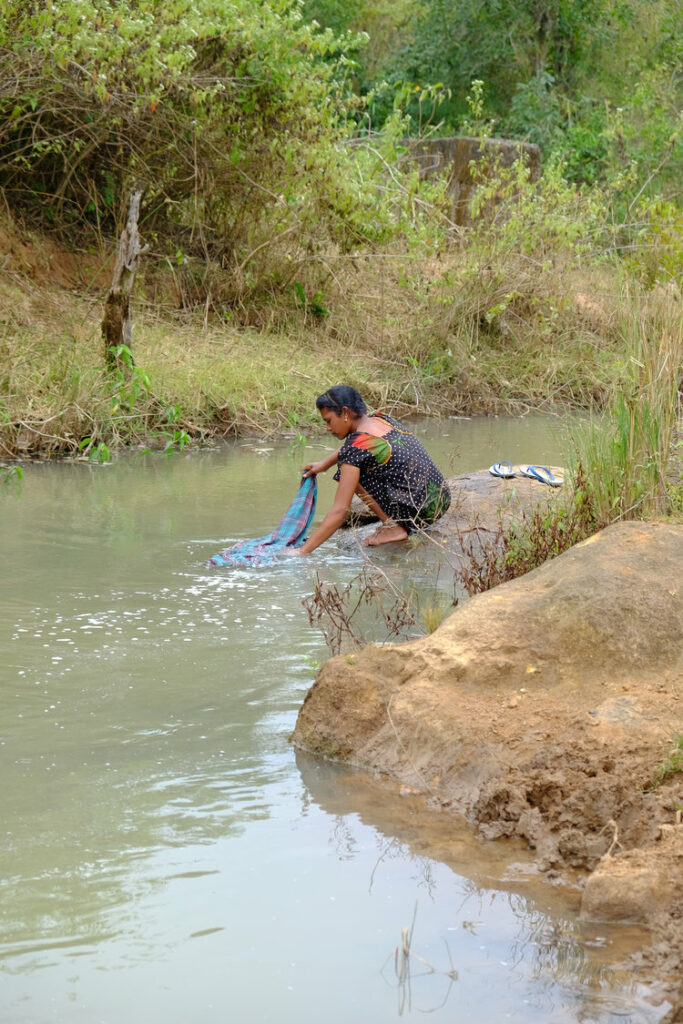

VJNNS, our partner in this region has developed a unique design of gravity fed water system, which, together with community development, sanitation and hygiene training, has had an incredible impact on the livelihoods of the communities.
The spring that provides Chittamidi with water is another 2km up the valley. Having found this spring, VJNNS provide the villagers with materials and expertise to build a box around it that protects it from damage and contamination.

Working together, villagers & NGO staff lay pipes to funnel the water from the spring to a distribution tank, also built from scratch, on the edge of the village. Getting the position right is critical to ensure that the water flows by gravity alone.
From here the water is fed to taps located around the village which I tried for myself!
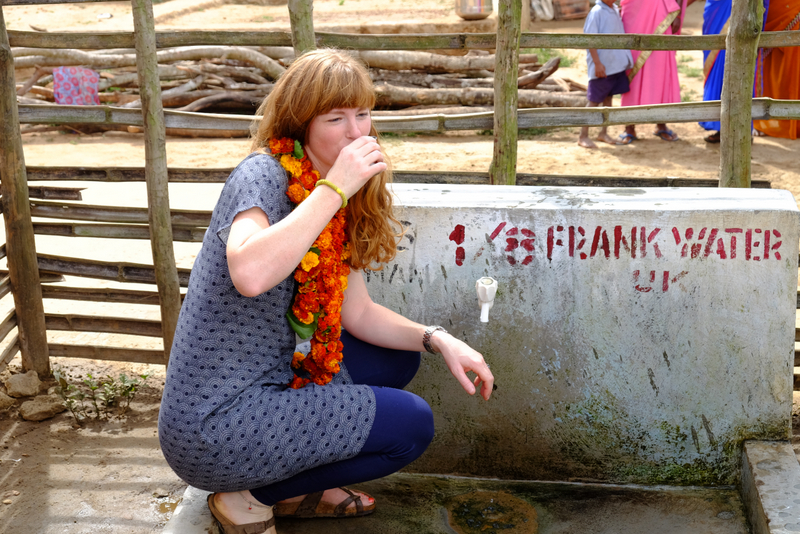
The women tell me how they used to spend half of their day making trips to a different water source further up the valley, navigating thin mountain paths with a stack of water pots on their heads. Once they’d got the water, they’d need to filter it before it was safe to drink, which required more time, or risk serious illness from drinking the water.

Now they have water in their village they have the time to focus on cultivating their fields. Already, they’ve seen a difference in their income and can afford to buy new crops, like tomatoes, aubergine and turmeric.
Meet Korrabatti – she cultivates coffee in the surrounding forest….
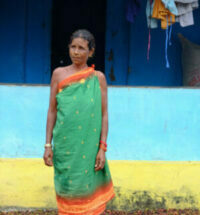
…and Neela, a 15 year old girl whose parents have been able to afford to get her training in tailoring and has set up her own little business at the front of her house.
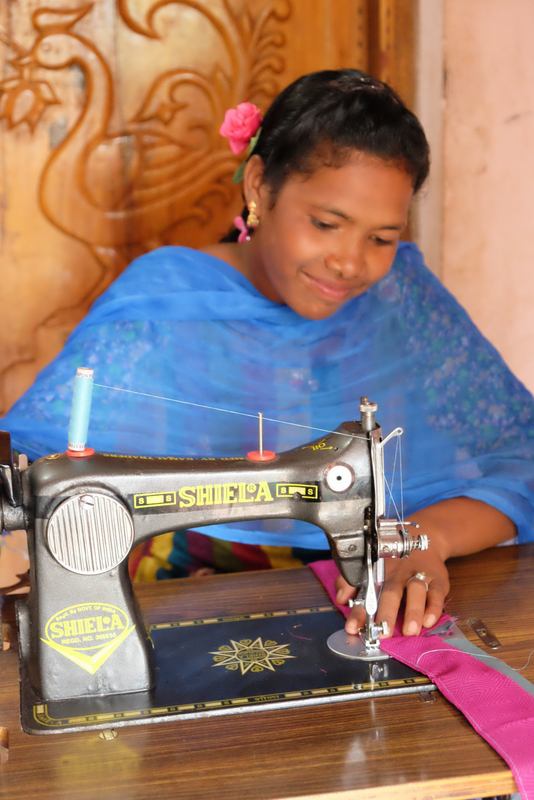
Pangi and Sanni grow cabbages along with a few of their neighbours. Sanni told us how she has two children who can go to school, not only because she has money to pay for their uniform and transport, but also because she no longer needs their help collecting water.


Sanni is a member of the Community Action Group – every village has one, made up of 5 men and 5 women. The group is responsible for overall village development. They collect contributions from the households (around £1.40 per household per year) to pay to maintain the system. As well as learning to build and maintain the GFWS, they received training from our partner to claim government funding for toilets.
These were just two of the places that we went and stories that we heard. We saw villages at every stage of development. Highlights included a school where we found the children mid-way through a hand washing session before their mid-day meal…

…and a village Sangathan – a truly inspiring event at which every member of the village agrees to work together to build the gravity fed system – from start to finish, it takes about 4 months. Both men and women mix cement then women carry it in bowls on their heads to other men who are building the tank.
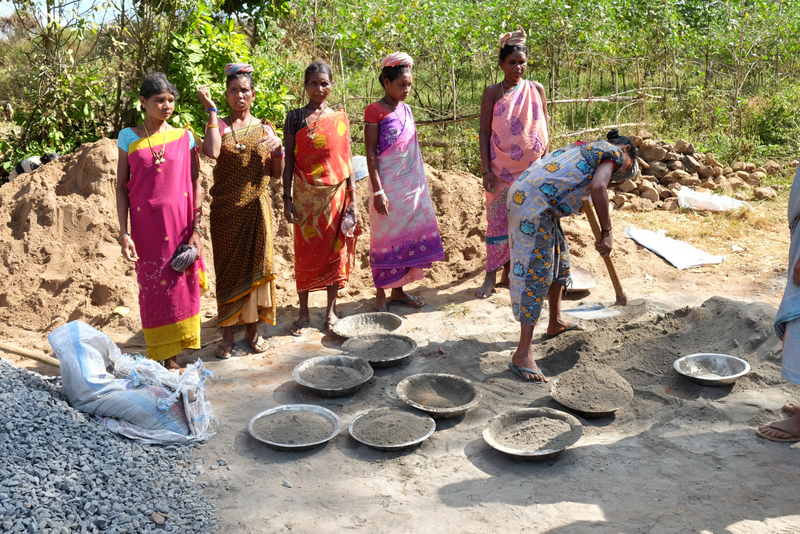



Over the following weeks they build and lay the pipelines to take the water from tank to taps located throughout the village. We walked over a kilometre to see where women get water at the moment.

The women and girls carry the water back up thin, rough paths, with between 40kg and 50kg of water on their heads, we heard stories of dramatic injuries, not to mention the compacting of the spine which is felt later in life. They currently filter the water with cloths and if there’s time and enough wood, they boil it. Without boiling, they suffer diarrhoea and other sickness.
Needless to say they eagerly await their safe water.
Nearing the end of our trip we sat drinking the local mahua in front of the camp fire, sharing the stories we’d heard over the last few weeks. In discussing the complexity and requirements of community development I said, without thinking of the gender preference inferred ‘it needs more man power’ and Amelia piped up, with an unusually defiant voice ‘I think more woman power would be even better Mum’. My quiet, resilient companion, had been at my side, taking it all in and processing the sights and experiences in her own space and time. She’d seen with her own eyes, evidence that women, given the opportunity, can not only take control of their own future, but transform the lives of their family and community. If this was the key learning she’d taken from the trip, the anxiety and tears in the first week when the chaos of India made her long for the comfort and familiarity of home, had become an important part of the personal journey she’d had.

I also believe that for the villagers, meeting Amelia and I, introduced as the founder of FRANK Water and her daughter, enabled a deeper, symbiotic connection between us, the reciprocal respect and common desire to enable a better future for our children, especially our girls.

Three weeks, 22 villages, four states of India, over 100 hours on planes, trains and automobiles and one birthday celebrated, we got back to Bristol with a brand new sense of purpose, optimism and energy (once the jetlag had worn off). Over the next months, we’ll be developing a plan for the next three years at FRANK Water. Already you’ve helped us reach more than 325,000 people with safe water and toilets.
Join us for the next stage in our journey and help change more lives. Scroll down to subscribe to our newsletter and join us for the next stage in our journey.